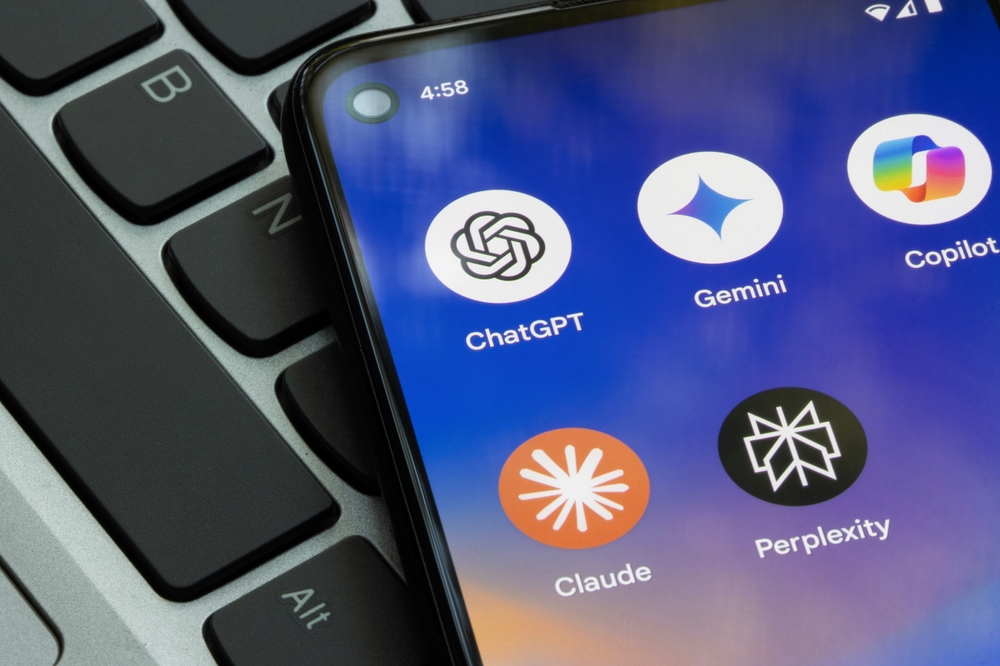Consumers are increasingly turning to generative AI-powered search in addition to—and in some cases, in lieu of—traditional search engines. In a recent survey from Vox Media, 52% of respondents said they use AI chatbots or alternative platforms—including social—to find information instead of Google. And Gartner has predicted that traditional search engine volume will drop by 25% by 2026 due to AI chatbots.
To address this shift in consumer behavior, some companies are turning to GEO, or generative engine optimization, a strategy designed to improve the discoverability of brand-related content specifically within generative search engines. Others, including the financial services brand Discover, are waiting to see how the generative search space evolves before shifting strategy.
“I’ve learned in my experience with SEO that sometimes you have to see what is a sustainable tactic and what is just in the moment driving an algorithm change,” said Matt Lattman, SVP of Card Acquisition Marketing at Discover. “Is that going to play out long-term? I don’t want to change our way of working or our strategy until we have a little bit more of an idea of the sustainability, based on that belief that long-term, the key to winning in any space is helping the consumer achieve whatever their goal is.”
To meet the moment, Lattman’s team is studying how the brand shows up in genAI queries through testing and learning, while also continuing to follow traditional SEO principles. “In the case of Discover, we believe that we’re going to help consumers unlock a brighter financial future. So I need to deliver against that brand mission everywhere that we’re interacting and interfacing with consumers,” he said.
We spoke with Lattman about Discover’s approach to generative search, the challenges of marketing in a regulated industry, channels that work well for the brand and the evolution of data privacy in advertising.
Chief Marketer: Consumers are using generative AI to search for information and products in new ways. Where is Discover as a brand on taking that into account? What changes are you making in light of this shift?

Matt Lattman, SVP of Card Acquisition Marketing at Discover: It would be impossible to not see that customers are changing behavior. They’re using ChatGPT, they’re using Claude, Perplexity, et cetera, more and more as part of what they do every day. Right after ChatGPT was first launched, the first question that came to my mind was, what happens if I search “what’s the best credit card for me?” And the answers that came back seemed kind of random.
So we started down the journey of understanding what SEO would look like in a generative world. Now, there’s the GEO [Generative Engine Optimization] term. But before the new term came in, we said, well, what does this mean? We started by just running searches manually ourselves, on our own computers, and seeing what we could find, and learning. And it became apparent that it was even harder to predict than SEO.
If you think about traditional search with Google or Bing, they don’t tell you the algorithm. But you can run tests and try things and experiment, and watch and monitor your positions and have all this data and try your best to back into it. Many partners and many companies have their belief that they’ve backed into, and they “reverse engineer” the algorithm. We take more of a philosophical approach to SEO.
CM: What is Discover’s strategy with GEO? How does it vary from SEO?
ML: When you get into GEO, you have even more degrees of freedom between what the input is and what the output is. So it’s even harder to really understand what’s going on at the end of the day. These are predictive algorithms that try to [determine] what’s the next likely word. They’re trained off of lots of information of what is already available on the web.
And so I have to believe that to an extent, if I use a lot of the same principles of SEO where we test, we monitor, we build new content—we test, we monitor, we build new content—and we look for minimizing things that are bad for the customer experience and the service of getting them an answer to their question, we will show up well in search generative experiences on the other side. It’s so early there that I don’t have a perfect strategy. We’re monitoring, we’re learning, we’re trying to get better every day.
CM: What does that actually look like in practice? Are you creating different kinds of content that respond to questions that people put in search engines? And how do you actually minimize something that’s negative?
ML: I’ve always thought that the best approach to search is if a customer is going into a search engine to ask a question, I should try to answer it, plain and simple. So I don’t think that that’s necessarily changed. We’ll try to understand the questions with different datasets, as new datasets and secondary industries in monitoring this stuff pop up. I think we’ll evaluate those. I haven’t personally seen any yet, but I’m sure that they’re coming—the same way that there’s a bunch of companies that sell SEO services to try to figure out what people are searching for, when they’re searching for it, where they’re searching for it, and how often. So that’s the first experience.
The other one is largely around, how am I optimizing my feedback loops that I do get to better the experiences I have? So if I haven’t answered a question today that would show up, or if I’ve answered it poorly, that would show up in the feedback loop of us searching, “what’s the best credit card” or “I’m looking for a new credit card, what’s the best one for me” in Google. And we’d be able to see the order that each organic result came in. And if we’re not doing as well as we should be doing relative to other searches, that could be a focus area.
In GEO, that’s a little harder to do right now. So we’re still developing and still figuring out our approach there, but I don’t know that it will be, or it needs to be, fundamentally that different from what we do in SEO. The prioritization of where we focus within that framework might be different, depending on the outcomes that we’re seeing.
CM: What parts of SEO are still very solid in your view and that you’re still dedicated to?
ML: We’re still dedicated to the core mission of, how do we ensure that the content is relevant to what people are looking for, and when it is, that we’re helping to answer the questions that people have or the needs that people are signaling. So we continue to monitor that. I think the traditional SEO model plays in very nicely to a GEO model, in that trying to focus on rank shouldn’t be that different.
Google and Microsoft have very specific ways that they treat site experience in their rankings. And again, they don’t tell you what the weighting is, but Google has a measure of the core web vitals, which includes things like: when you land on Discover’s landing page versus somebody else’s, is it jumpy? When you start to click, does an ad or something else pop up and it moves you off the page? We try to make sure that we’re not doing those things because a) it’s a bad customer experience, and b) in the event that Google considers it in the ranking, we want to show up well. We do monitor that stuff very closely.
With a bunch of new players coming in the space, I don’t know how they’re considering that, and they may evolve their approach to that. So we’re constantly watching and trying to just learn. If you go back to the early days of search, there were 10, 15, 20 different search engines out there. There was “Ask Jeeves,” and so many other ones. So I think at some point, we’ll see a smaller, more stable set and we’ll be able to develop a little bit more of a relationship in the sense of, we know what’s coming. There will be an industry around it. I think we’re just trying to figure out what’s going on as an industry and go from there.

CM: As you test, learn and experiment, are you using any partners or agencies for this?
ML: No, but we’re obviously having conversations with our agency partners and trying to figure out a path forward because we see them as helping us think through strategic questions. I look at thought leadership across the industry, and we’re definitely trying things where we can with our agencies. We also have to be very mindful to do that in a way where we’ve gotten the appropriate approvals. We know that we’re not doing anything that puts anybody at risk, and we’re doing it in a highly compliant way given the regulatory nature of our industry. The other reality is customers are using this today, and so we need to be prepared for it.
CM: Do you have an example of new types of content that you’ve created or a new type of experience or an enhancement of a customer experience as a result of your experimentation with genAI? For instance, some brands are creating FAQs in the hope of getting picked up by genAI search engines.
ML: Not specifically, and the reason for that is that I’ve learned in my experience with SEO that sometimes you have to see what is a sustainable tactic and what is just in the moment driving an algorithm change. Is that going to play out long-term? I don’t want to change our way of working or our strategy until we have a little bit more of an idea of the sustainability based on that belief that long-term, the key to winning in any space is helping the consumer achieve whatever their goal is. In the case of Discover, we believe that we’re going to help consumers unlock a brighter financial future. So I need to deliver against that brand mission everywhere that we’re interacting and interfacing with consumers.
CM: Let’s shift gears to customer acquisition at Discover overall. What are your main areas of focus is right now?
ML: I benefit from having an amazing partnership across our credit card business in providing great value to consumers. So I get to sell great products. We have a product offering that plays well across multiple user needs in terms of delivering great rewards, value, providing great customer service—both in our app and on the phone—and being very easy to redeem those rewards. I think we deliver on a value proposition that for many people is just a very straightforward and high-value thing. And as a result of that, I have to align that value proposition with the places where those consumers are. That’s really our focus in acquisition marketing.
We have to be very return-oriented in the sense of we’re trying to drive value for the company in a very specific, very measurable way, and partnering very closely with our enterprise marketing and brand team to unlock some opportunities where maybe it doesn’t make sense now for me from a purely economic sense, but it feels like a good place for us to be to drive consideration. And we can track that in different ways as well.
So for us, it continues to be, how do we tell that story, be it in direct mail, be it in affiliate marketing, be it in social media, paid search, organic search, however people want to find us, where we’re calculating, prioritizing to be there as best as we can. Obviously if somebody says, I will get you one customer and charge you many millions of dollars, I’m not going to go to that channel. But we do try to just focus on, how can we tell our story? Where can we tell our story, and how can we introduce new customers to Discover?
CM: In terms of where you’re meeting them, are there certain places you’re more focused on right now? Any shift in channels or spaces where you are trying to reach them?
ML: No, I think the biggest change is as customer preference and as customer interaction changes, so must advertisers. As we see trends of customers using and interacting more with video, we think about where we can play, and can we do that economically? Does our role change in video to show up authentically, vis-à-vis our role in say, direct mail, where we kind of own the piece and own the channel? We’re trying to figure out, as creator-based media becomes much more of the media consumed in the landscape, what is our role there? And how can we show up in the right way and in a way where we can actually track back and measure results?
CM: You mentioned direct mail. Is that an important channel for the brand?
ML: There are certain things within the regulatory landscape of banking that make direct mail a very efficient and good channel. We’re able to tell a story. We’re also able to make a firm, pre-approved offer in compliance with the Fair Credit Reporting Act. That’s very beneficial because customers know they’re likely to get approved if you tell them that they’re pre-approved for an offer. And I can’t necessarily make that offer in other channels, for regulatory reasons.
What are the ways that we can introduce customers to Discover, make it easy for them to know if they’ll be approved or not, upfront? And we do have a pre-approval flow, so you can see the offers available to you before you apply, with no hard inquiry on your credit. But we need to tell that story in different form factors for different consumers.
CM: Back to digital and targeting potential customers: How is that challenging, specifically in a highly-regulated industry like yours?
ML: We are more defined and careful in our approach than in non-regulated industries, obviously. The regulatory landscape is sometimes confusing, sometimes conflicting. But we have to do our best to understand that, and be mindful of that. But at the end of the day, we want to make sure that we are providing customers with a good experience and a trusted experience. Data usage has been something that the financial services industries have been very mindful of for a long time. And so even though there’s new form factors and we’re all learning together, we’re still clarifying as an industry how we can use certain data and how we can’t use certain data.
Generally we try to use first- and second-party, second-party being us plus a bureau, where we can, in consented ways, [allow] customers to know whether they’re going to get an offer of credit or not. So for instance, you could go to an affiliate, or a marketplace site, for example, NerdWallet, Credit Karma, Lending Tree, something like that. And you can consent there to share your information so that you know if you’re getting a firm offer of credit. What I like about that is you’re not going to get out of sharing data to make credit decisions. But [marketers] have to do so with the customer having ownership and consent in the process. And to me, that’s how I think about privacy in general—the more that we’re making a discussion explicit versus implicit, everybody wins.
CM: And the value exchange between customers and advertisers is more apparent.
ML: I think we’re seeing this more and more, especially as many publishers are really starting to think about not hiding the fact that advertisers are sponsoring the content that they’re giving away for free. Because at some point, somebody’s got to pay for the content. And if you know somebody’s choosing a lower price, an ad-supported tier or a free tier, and then they don’t realize that there’s an advertiser behind it that wants to do certain things, or wants to make their case to sell you a product (there may be personalization behind that that’s influencing which advertiser is doing that), then they won’t value the advertiser’s role in that exchange for the content. But ultimately, advertising drives great media and great content if the consumer isn’t willing to pay for it themselves.
That combination market we’re seeing a lot in podcasting. A lot of podcasters have a split between their membership. I am a preferred member of a couple podcasts that I like because I want to make sure that that podcast is producing, but I realize not everybody will do that, or not everybody will regularly listen to that podcast and add dollars that need to come in to make sure that that’s happening. The more customers understand that, the more they’re accepting and can choose whether or not they want to consume, and what that exchange is.









